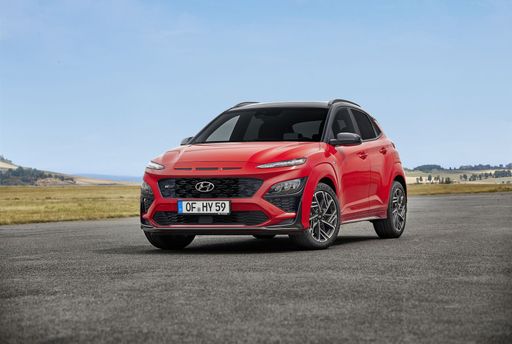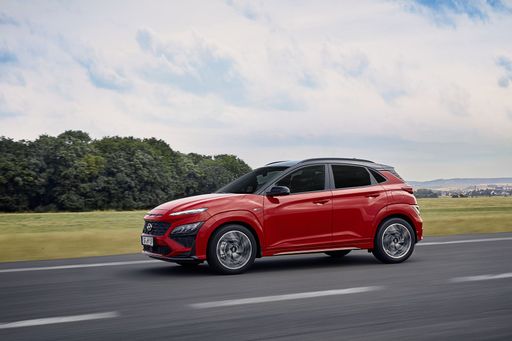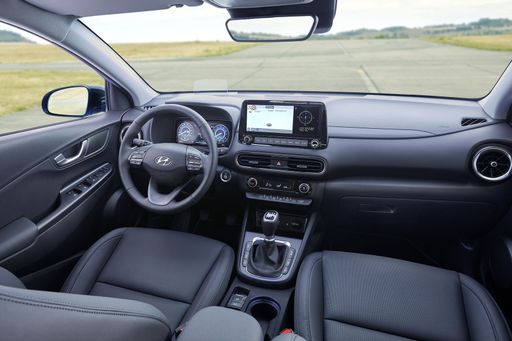Hyundai Kona vs Mitsubishi Outlander – Which car suits you better?
Two cars, one duel: Hyundai Kona meets Mitsubishi Outlander.
Which one wins in performance, efficiency and value for money? Find out now!
Costs and Efficiency:
Looking at overall running costs, both models reveal some interesting differences in everyday economy.
Hyundai Kona has a convincingly advantage in terms of price – it starts at 23100 £, while the Mitsubishi Outlander costs 42800 £. That’s a price difference of around 19791 £.
Fuel consumption also shows a difference: Mitsubishi Outlander manages with 0.80 L and is therefore significantly more efficient than the Hyundai Kona with 4.60 L. The difference is about 3.80 L per 100 km.
As for range, the Hyundai Kona performs convincingly better – achieving up to 514 km, about 429 km more than the Mitsubishi Outlander.
Engine and Performance:
Power, torque and acceleration say a lot about how a car feels on the road. This is where you see which model delivers more driving dynamics.
When it comes to engine power, the Mitsubishi Outlander has a noticeable edge – offering 306 HP compared to 218 HP. That’s roughly 88 HP more horsepower.
In acceleration from 0 to 100 km/h, the Hyundai Kona is barely noticeable quicker – completing the sprint in 7.80 s, while the Mitsubishi Outlander takes 7.90 s. That’s about 0.10 s faster.
In terms of top speed, the Hyundai Kona performs to a small extent better – reaching 210 km/h, while the Mitsubishi Outlander tops out at 170 km/h. The difference is around 40 km/h.
Space and Everyday Use:
Cabin size, boot volume and payload all play a role in everyday practicality. Here, comfort and flexibility make the difference.
Both vehicles offer seating for 5 people.
In curb weight, Hyundai Kona is significantly lighter – 1370 kg compared to 2070 kg. The difference is around 700 kg.
In terms of boot space, the Mitsubishi Outlander offers slight more room – 495 L compared to 466 L. That’s a difference of about 29 L.
In maximum load capacity, the Mitsubishi Outlander performs hardly perceptible better – up to 1404 L, which is about 104 L more than the Hyundai Kona.
When it comes to payload, Mitsubishi Outlander slightly takes the win – 595 kg compared to 490 kg. That’s a difference of about 105 kg.
Who comes out on top?
Overall, the Mitsubishi Outlander shows itself to be is largely superior and secures the title of DriveDuel Champion.
It convinces with the more balanced overall package and proves to be the more versatile choice for everyday use.

Mitsubishi Outlander
Hyundai Kona
The Hyundai Kona wears its personality on the outside with bold styling and sprightly handling that turns city driving into something a little more fun than a commute. It blends practical space, modern tech and sensible running costs into a compact, stylish package — a smart pick if you want flair without paying luxury prices.
details @ Hyundai Motor Company
@ Hyundai Motor Company
 @ Hyundai Motor Company
@ Hyundai Motor Company
 @ Hyundai Motor Company
@ Hyundai Motor Company
 @ Hyundai Motor Company
@ Hyundai Motor Company
Mitsubishi Outlander
The Mitsubishi Outlander is a sensible family SUV that blends roomy practicality with a calm, assured ride—ideal for school runs and weekend getaways. It won’t set pulses racing, but its tidy interior, straightforward equipment and low-stress ownership make it a smart, unfussy pick for buyers who prefer reliability over flash.
details
 @ Hyundai Motor Company
@ Hyundai Motor Company
|
|
|
|
|
Costs and Consumption |
|
|---|---|
|
Price
23100 - 41600 £
|
Price
42800 - 51000 £
|
|
Consumption L/100km
4.6 - 7 L
|
Consumption L/100km
0.80 L
|
|
Consumption kWh/100km
14.6 - 16.8 kWh
|
Consumption kWh/100km
-
|
|
Electric Range
377 - 514 km
|
Electric Range
83 - 85 km
|
|
Battery Capacity
1.3 - 65.4 kWh
|
Battery Capacity
-
|
|
co2
0 - 163 g/km
|
co2
19 g/km
|
|
Fuel tank capacity
38 - 47 L
|
Fuel tank capacity
53 L
|
Dimensions and Body |
|
|---|---|
|
Body Type
SUV
|
Body Type
SUV
|
|
Seats
5
|
Seats
5
|
|
Doors
5
|
Doors
5
|
|
Curb weight
1370 - 1773 kg
|
Curb weight
2070 - 2120 kg
|
|
Trunk capacity
466 L
|
Trunk capacity
495 L
|
|
Length
4350 - 4385 mm
|
Length
4719 mm
|
|
Width
1825 mm
|
Width
1862 mm
|
|
Height
1580 - 1585 mm
|
Height
1746 - 1750 mm
|
|
Max trunk capacity
1300 L
|
Max trunk capacity
1404 L
|
|
Payload
420 - 490 kg
|
Payload
545 - 595 kg
|
Engine and Performance |
|
|---|---|
|
Engine Type
Electric, Petrol, Full Hybrid
|
Engine Type
Plugin Hybrid
|
|
Transmission
Automatic, Manuel
|
Transmission
-
|
|
Transmission Detail
Reduction Gearbox, Manual Gearbox, Dual-Clutch Automatic
|
Transmission Detail
-
|
|
Drive Type
Front-Wheel Drive, All-Wheel Drive
|
Drive Type
All-Wheel Drive
|
|
Power HP
115 - 218 HP
|
Power HP
306 HP
|
|
Acceleration 0-100km/h
7.8 - 11.9 s
|
Acceleration 0-100km/h
7.90 s
|
|
Max Speed
162 - 210 km/h
|
Max Speed
170 km/h
|
|
Torque
200 - 265 Nm
|
Torque
-
|
|
Number of Cylinders
3 - 4
|
Number of Cylinders
4
|
|
Power kW
85 - 160 kW
|
Power kW
225 kW
|
|
Engine capacity
998 - 1598 cm3
|
Engine capacity
2360 cm3
|
General |
|
|---|---|
|
Model Year
2024 - 2025
|
Model Year
2025
|
|
CO2 Efficiency Class
A, D, C, E, F
|
CO2 Efficiency Class
B
|
|
Brand
Hyundai
|
Brand
Mitsubishi
|
Is the Hyundai Kona offered with different drivetrains?
Available configurations include Front-Wheel Drive or All-Wheel Drive.
The prices and data displayed are estimates based on German list prices and may vary by country. This information is not legally binding.
